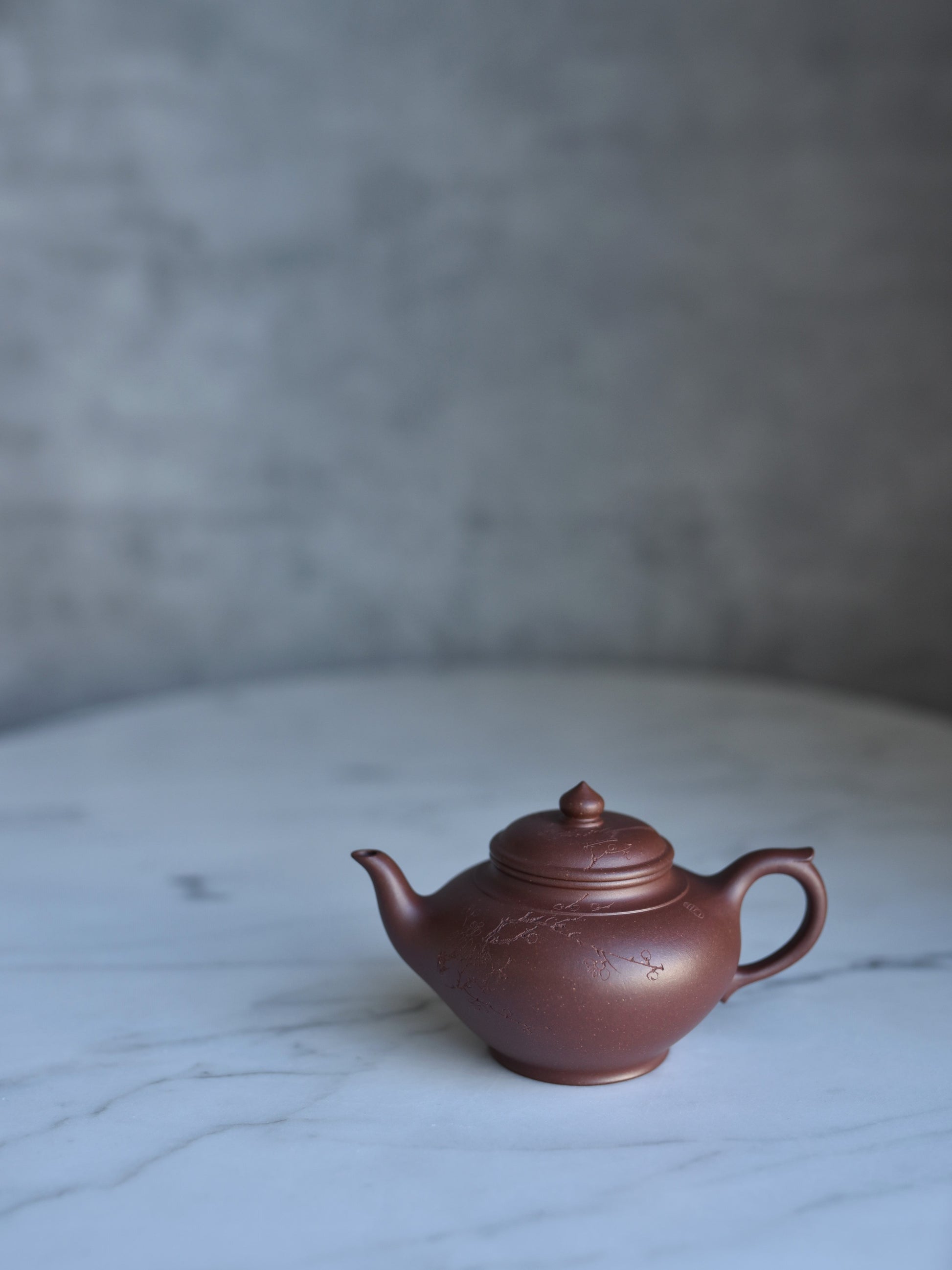FatBat Puerh
Xiao Ying - Plum Blossom (笑樱•梅花版) Di Cao Qing Yixing Teapot
Xiao Ying - Plum Blossom (笑樱•梅花版) Di Cao Qing Yixing Teapot
Couldn't load pickup availability
Xiao Ying-Plum Blossom Di Cao Qing Teapot | Yixing Zisha
笑樱•梅花 - 底槽清 | 宜兴紫砂
Shape: Xiao Ying, with fine line hand-engraving 手工微雕
Artist: Zhong Ze Liang, Associate Master of Arts and Crafts
Clay: Di Cao Qing 底槽清
Capacity: 120 ml
Pour Time: 10s
Made in artist's studio in old Factory 1 grounds, Dingshan, Yixing.
ABOUT THE TEAPOT
Xiao Ying, one of the most adored shape of Zisha since it is first created in Ming dynasty, is given a new interpretation by the artist for the shape, tone of clay and the fine hand-engraving that adds character of texture. This shape is rarely crafted in this small size, making it a very special creation.
Hand-engraving was done by Master Zhong's close friend and fellow artist who specializes in delicate fine-art engravings. The subtlety of engraving is superb, especially observed in the feathers of the bird carved on the lid.
The clay is Di Cao Qing, belongs to the Zi Ni (purple clay) family, but is a special grade that requires high firing temperatures. Not all Di Cao Qing is equal, only the top grade is able to thrive through high firing. It will season quickly and beautifully with normal use.
The artist, Mr. Zhong Ze Liang, is a highly gifted craftsman and designer from the studio of National Master Shi Yin Zhi.
Click here to learn more about this studio: The House of Shi
CARE OF YOUR ZISHA
1. To clean your new teapot, first rinse well inside and out with lukewarm water. Then fill with hot water just off the boil, steep for 30s and pour out. Repeat the hot water rinse 2-3 times as needed.
2. Brew your favorite tea!
3. After the session, empty the spent leaf and rinse out well with hot water. Dry the exterior gently with a soft cloth if needed to remove any stains that remain.
4. Air dry in a well-ventilated area with the lid removed.
Other Tips:
- Never use detergent or any other cleaning agent on Zisha!
- Our Zisha is top quality; boiling with tea leaves (or tofu) before use is not needed.
- Your teapot will develop a patina through regular use and care. Avoid pouring tea over the exterior of the pot to hasten the process, this will quickly result in a “dirty” looking pot.
Share




















